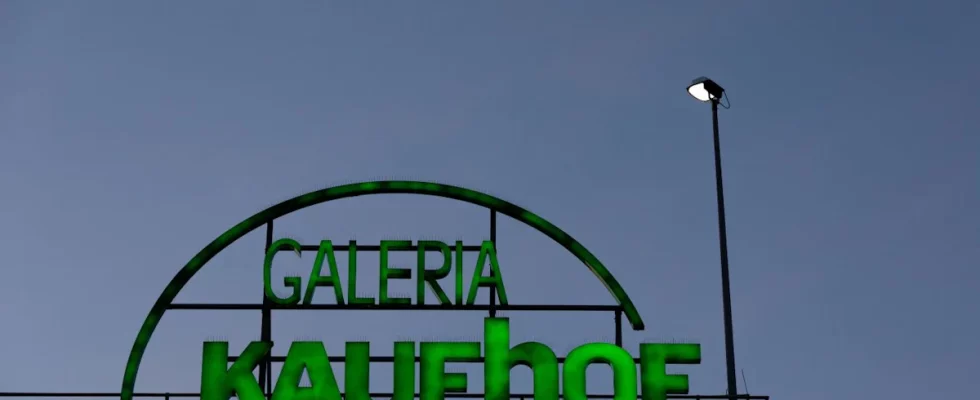The Verdi service union has “strongly” criticized Galeria Karstadt Kaufhof’s closure plans. Verdi said that not only the union, but also politicians and society should not accept these closure plans and would now have to fight for jobs and branches.
Jürgen Ettl, the chairman of the department store chain’s general works council, spoke of a “roller coaster of emotions”. On the one hand, the approximately 11,400 employees who kept their jobs were happy. On the other hand, there is “great horror” among the 1,400 employees who will be laid off. Ettl appealed to politicians to do more to combat the desolation of inner cities.
Mayor Wolfram Leibe of Trier, where one of two Galeria branches is to be closed, said the news was “bad news”. The city will now work harder on the attractiveness of the pedestrian zone and the area surrounding the Porta Nigra, the historic city gate. In an interview with the SZ, the mayor of Regensburg, Gertrud Maltz-Schwarzfischer, expressed concern that an attractive location in the old town on Neupfarrplatz could face a prolonged vacancy. One of two branches in Regensburg is also scheduled to close.
On Saturday, Galeria announced in which cities the branches should close by the end of August. There are 16 out of 92 branches in total. Three of them are in Bavaria: in addition to the one in Regensburg, the ones in Augsburg and Würzburg. In Rhineland-Palatinate, in addition to Trier (Fleischstrasse), it also hits Mainz. In Cologne, the department store on Breite Straße is closing, which remains on Hohe Straße, like 76 other locations. In Berlin, three stores are closing: in the Ringcenter, in Spandau and Tempelhof. However, Berlin still has five Galeria department stores, and there is also the KaDeWe. It should also be over in Potsdam. The remaining “closure branches” are spread across the republic: Chemnitz, Essen, Leonberg, Mainz, Oldenburg, and Wesel.
According to the company, the decisive factor for the end was whether the branches were making money or had a chance of doing so. The decisive criteria were the purchasing power in the cities and especially the level of rents. However, previous insolvency proceedings have shown that cities can be taken off the strike list again. For example, if after their publication the landlords give in and reduce the rents.
Insolvency administrator Stefan Denkhaus said: “We have defined a standard market rental corridor of seven to eleven percent of sales as a goal in order to be able to operate the respective branch economically profitably.” In some cases, the rents actually paid were well above this corridor. This was particularly the case with the 18 branches that belonged to the previous, insolvent owner Signa of the Austrian entrepreneur René Benko. In Cologne Hohe Straße, the rent was 33 percent based on sales. Now there are only four Signa branches on the deleted list: Mainz, Trier, Würzburg and Mannheim. This shows that Signa was flexible in the negotiations with Denkhaus about the rent level. The Signa branch on Rotkreuzplatz in Munich also made it off the list.
Unlike the previous two bankruptcies, this time employees in branches that are not affected do not have to worry about their jobs. And a transfer company is available to the 1,400 employees who will be laid off. You can receive 80 percent of your gross salary over eight months. The Galeria headquarters is to move from Essen to the fourth and fifth floors of the branch on Schadowstrasse in Düsseldorf.
The next step in the insolvency proceedings, which began in January, is the creditors’ meeting scheduled by the Essen district court for May 28th at the Messe Essen.

